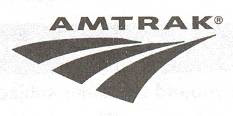
The Baltimore and Ohio Station
This is a very normal, ordinary wooden station building, plain in design. It probably resembles many other railroad station buildings that still exist, or used to exist. About the only thing out of the ordinary about it, is that despite the fact that the railroad called it "Smithton" it is actually located in the town of Smithburg WV. But that, in and of itself, is not really all that extraordinary. In plenty of other places, the railroad would give a station a name that was different from what the locals called their settlement.
Sometimes there were understandable reasons for a difference between a s
 tation name, and the name of the community it served. For example, several places railroads changed the station name in order to avoid confusion with other stops in the area with similar sounding names. The Norfolk and Western had two stations, Shepherdstown WV, and Sharpsburg MD, separated only by the single track bridge spanning the Potomac River. Accordingly they re-named the Sharpsburg MD depot, Antietam. This change not only avoided confusion on the operation of the railroad, but also assisted Civil War veterans who desired to return to the scene of battles they were in.
tation name, and the name of the community it served. For example, several places railroads changed the station name in order to avoid confusion with other stops in the area with similar sounding names. The Norfolk and Western had two stations, Shepherdstown WV, and Sharpsburg MD, separated only by the single track bridge spanning the Potomac River. Accordingly they re-named the Sharpsburg MD depot, Antietam. This change not only avoided confusion on the operation of the railroad, but also assisted Civil War veterans who desired to return to the scene of battles they were in.But other times, there was spite and vengance involved in changing a station's, and even the town's name. The best example of this situation I know of, was when Collis P. Huntington decided that the citi
 zens of Coalsmouth WV were not sufficiently cooperative with the crew building his new Chesapeake and Ohio Railroad. So, he simply had the name of the town changed by his chief lawyer, a man by the name of Parsons. The lawyer decided to name it after his home town, St. Albans VT. And thus was born "St. Albans WV."
zens of Coalsmouth WV were not sufficiently cooperative with the crew building his new Chesapeake and Ohio Railroad. So, he simply had the name of the town changed by his chief lawyer, a man by the name of Parsons. The lawyer decided to name it after his home town, St. Albans VT. And thus was born "St. Albans WV."At any rate, Smithton, Smithburg, whatever you want to call it, is no longer an active station. Further, the tracks that used to serve the station are no longer in existence. The tracks, which dated back to the historic Northwestern Virginia Railroad, a subsidiary of the Baltimore and Ohio, known for many years as the "National Limited Line" of the Baltimore and Ohio, were pulled in 1985 and the line was "railbanked." Through this section of the country, the line became the North Bend Railtrail.
Smithton depot, located roughly at the half-way point, has been repainted and restored on the inside to resemble a typical country station of the late 1800's in West Virginia. It is a very ordinary station. But even so, it still has a story to tell. You just have to listen and know where to look.



No comments:
Post a Comment